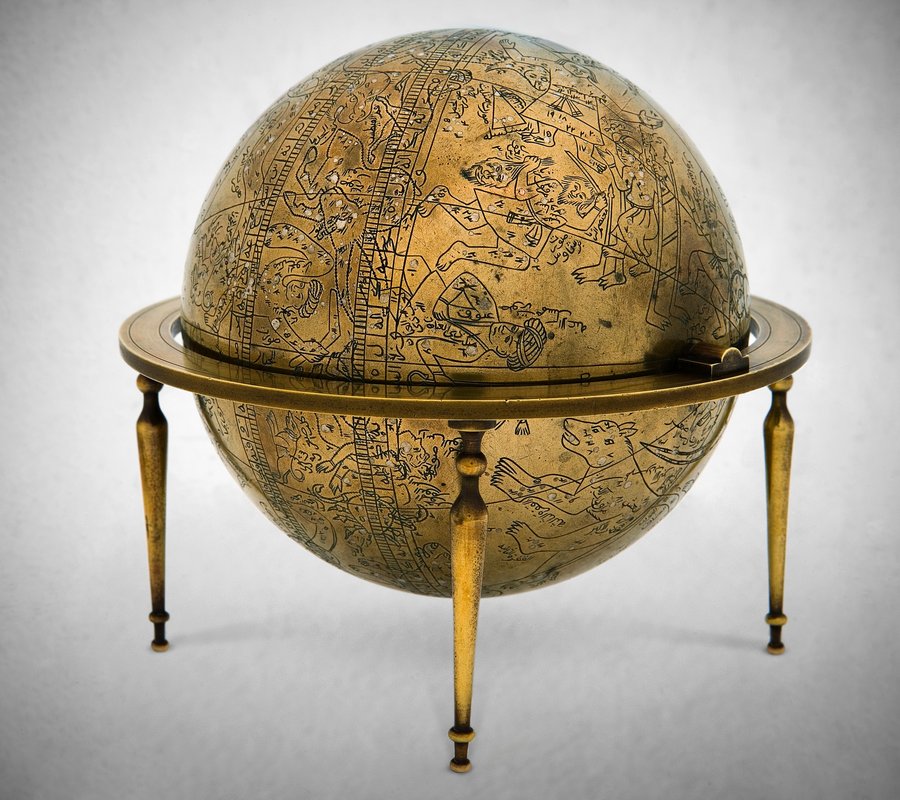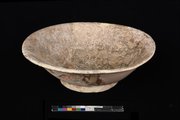
Celestial Globe
Museum of Islamic Art
- Title:
- Celestial Globe
- Artist:
- Muhammad I. Asturlabi Ibn Humayuni
- Maker:
- Muhammad I. Asturlabi Ibn Humayuni
- Production place:
- Lahore
- Date:
- 1900 - 1999
- Period:
- Mughal
- Title:
- Celestial Globe
- Artist:
- Muhammad I. Asturlabi Ibn Humayuni
- Maker:
- Muhammad I. Asturlabi Ibn Humayuni
- Production place:
- Lahore
- Date:
- 1900 - 1999
- Period:
- Mughal
- Material:
- Brass, Silver alloy, Black compound, Solder
- Technique:
- Casting, Incising, Inlaying, Assembling, Soldering
- Dimensions:
- 16.5 cm
- Diameter:
- 17 cm
This brass globe is cast in a method known as the lost-was technique, which allowed for a completely hollow circular form to be made with no traceable seams. The sphericity of this method meant that it was perfectly suited as a celestial globe, providing a round surface upon which stars, their zodiac symbols, and calibrated bands used to calculate degrees of latitude could be engraved. While celestial globes were originally invented in Ancient Greece, the earliest surviving examples date from the Islamic world. This rare example was made in Lahore, Pakistan and is dated 1049 AH/1639 CE. It was made by a famous family of scientific instrument makers, as denoted by the epithet appearing on the globe: “asturlabi Humayuni Lahuri” (meaning, Humayun’s astrolabe-maker of Lahore). This title connects the family's profession with that of the Mughal emperor Humayun (r. 936-946 AH/1530-1540 CE; interregnum; 962-963 AH/1555-1556 CE), who was himself a keen student of astronomy and astrology. He converted his library into an observatory, and was said to have organized his court and administration along astrological principles. This family of scientific instrument-makers continued to keep Humayun's name as an epithet for generations, as an honorific mark of status and profession. Indeed, most of the surviving celestial globes and astrolabes from Muslim India originate from this family.



